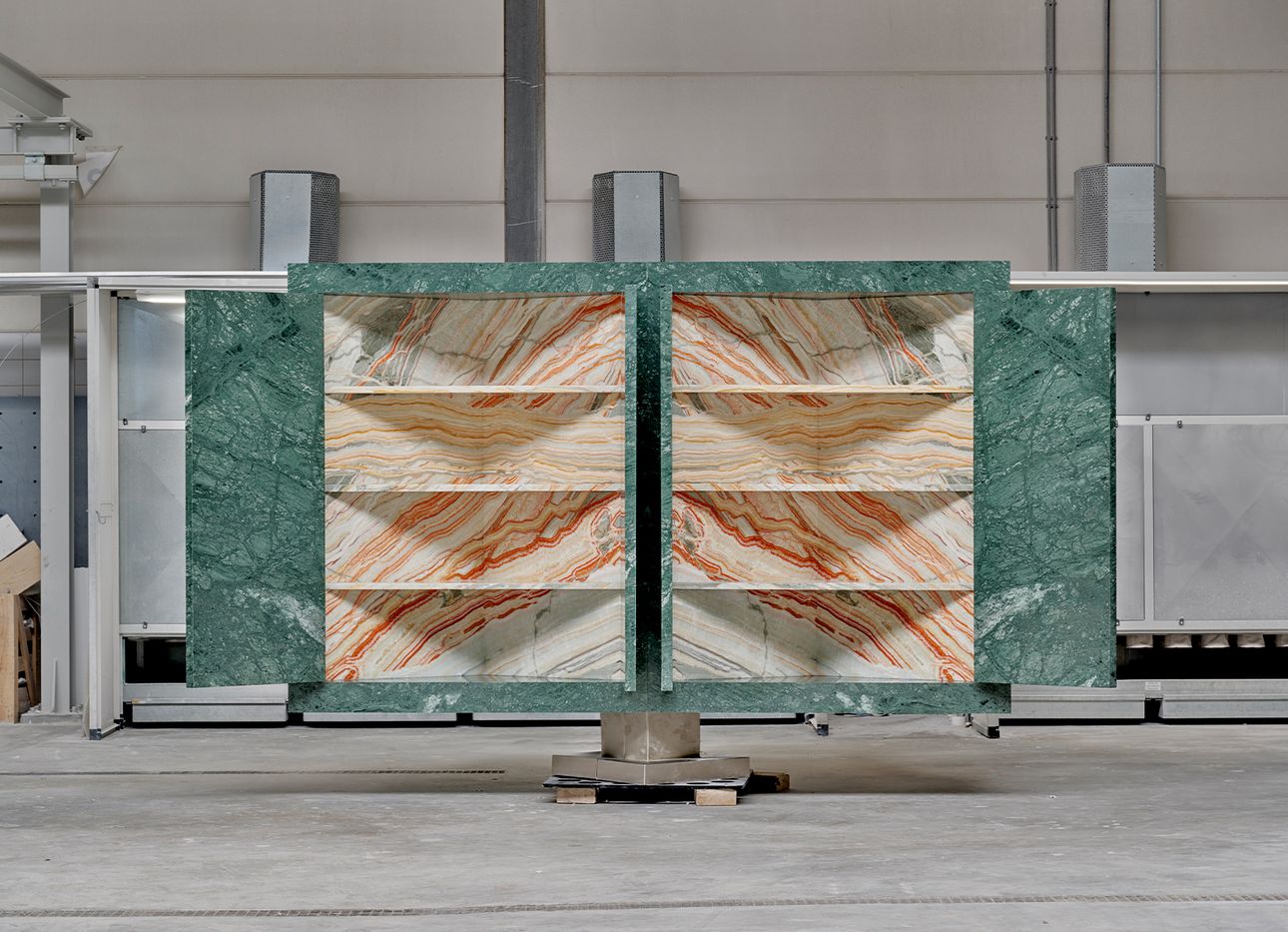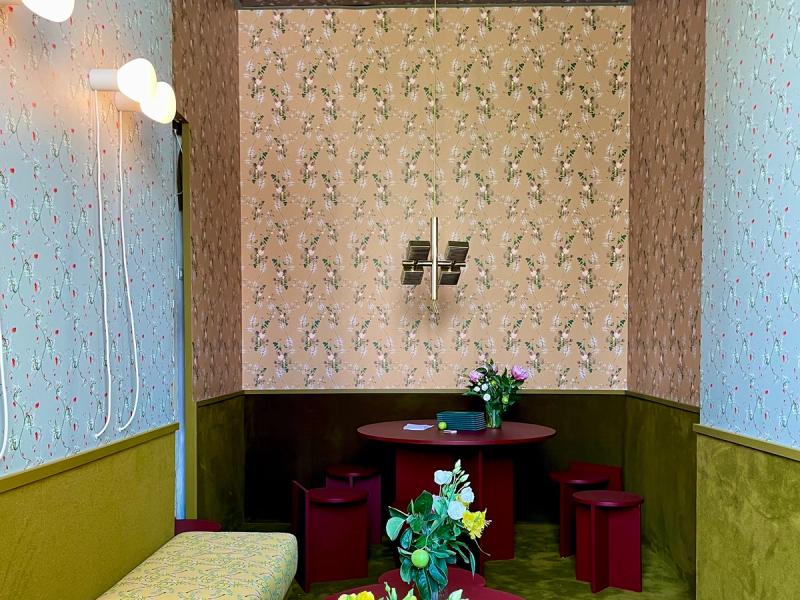
Alcova 2022 Presents Designs That Look Inward, Outward, and Beyond
One might describe Alcova, an independent design platform that activates forgotten sites in and around Milan during the city’s design week, as a just-taken snapshot of the design industry. The event’s creators, Joseph Grima and Valentina Ciuffi, aren’t interested in following a curatorial theme; rather, they seek out projects and ideas that speak to the moment, resulting in a wide range of work by emerging and established practitioners that invites viewers on a journey of discovery—a sense that’s underscored by Alcova’s distinctive locations, which are often disused, abandoned, or inaccessible to the public.
The 2022 iteration (June 5–12) will take place in the Military Hospital of Baggio, which appears, from the outside, as a mysterious plant-covered fortress (a sign there reads, “Military Zone, No Entry”) surrounded by a park. It builds on Alcova’s 2021 edition, which also took place in this space, within a trio of historic buildings, by expanding its footprint to include an E-shaped structure on the premises that’s bigger than the other three combined. Spanning 50 acres, this year’s event will present a range of exhibitions, talks, and site-specific installations and performances, resulting in the most extensive and ambitious Alcova to date.
A sense of renewal, exchange, and human connection ties this year’s projects together. This is perhaps best embodied by the second edition of Caffè Populaire, an aperitíf garden that explores the relationship between nature and design. Designed by Montreal-based lighting company Lambert & Fils and Milan-based design studio DWA, the activation sits within a vacant temple, where wildflowers spill into the gardens near an undulating water sculpture. Enhanced by Lambert & Fils’s latest collections and Florescence, a line of wallpaper from Andrew Zuckerman (co-founder of The Slowdown) and Nicole Bergen’s Superflower, the immersive oasis offers a moment of calm in the midst of the design-week hustle.

Several Alcova projects, naturally, are concerned with natural materials. Presenting new pieces from Dutch designer Sabine Marcelis and the architecture firm OMA that were commissioned by the natural stone company Solid Nature, the exhibition “Monumental Wonders” will take place across five rooms. Each will showcase how natural and semi-precious stones can be presented in unexpected yet functional ways—including OMA’s slab-like onyx-and-marble bed, which incorporates hidden storage compartments and charging outlets. Outside the building is “The Garden,” an installation of furniture by Los Angeles–based Sam Klemick, who runs the design practice Otherside Objects. Her pieces, upholstered with deadstock parachute nylon and canvas, use traditional woodworking methods to shape construction-grade douglas fir, salvaged from the streets of L.A. Klemick fills in any cracks with gold-toned resin, highlighting the wood’s natural imperfections with kintsugi-esque flair.
Other projects use furniture to comment on the state of design itself. “This Is America,” an exhibition co-curated by experience design studio Aditions and design PR collective Hello Human—both founded by women of color—addresses diversity and representation in the design world by featuring a range of voices from the field as a means of repositioning the term “American design.” Works include luminous sculptures meant to evoke portals of transition and growth by Mexican-American artist Alexis Tingey; Veil, an ethereal lighting collection inspired by Eastern architecture’s formal and material sensibilities around lightness, by Ladies and Gentlemen Studio’s Taiwanese designer Jean Lee and American designer Dylan Davis; and a wood-and-marble bench by Iranian-American artist Saba Yazdjerdi that pays tribute to Varzeshe Pahlevani, Iran’s millenary sport of heroes.
“Domesticity-at-Large,” a presentation by Eleni Petaloti and Leonidas Trampoukis of Objects of Common Interest, also looks at contemporary design, but through a more conceptual lens. The show offers a series of everyday domestic scenes—ones made all the more familiar during the pandemic—and focuses on the connections between furniture and space, and how they can blend into one another. The designers enveloped a mirror, for example, with cast resin, creating an object that distorts and reflects its surroundings.
Elsewhere, an emphasis on skilled making abounds. Beni Rugs’s presentation, “Spoken Lines,” explores the practice of rug-making in Morocco and how artisans are preserving—and evolving—the craft today. Expect to see 10 textiles, created with New York–based interiors stylist Colin King, that expand on the region’s time-honored knotted weaving technique, as well as site-specific artwork by Moroccan artist Amine El Gotaibi. The new American studio Refractory also focuses on expertly handmade objects. Its exhibition, “Holotype,” puts a series of its work—tactile lighting fixtures, tables, and objects that take timeless, organic forms—in conversation with printed work by photographer and documentarian Sarah Wilson and a series of paleontological specimens, nodding toward the distinctive beauty that comes with age and decay.
A show befitting of its environment, Alcova’s 2022 edition radiates an acute awareness of our natural surroundings, resulting in a collection of inventive, optimistic demonstrations of how design might ignite or renew understandings of the world and our place in it.